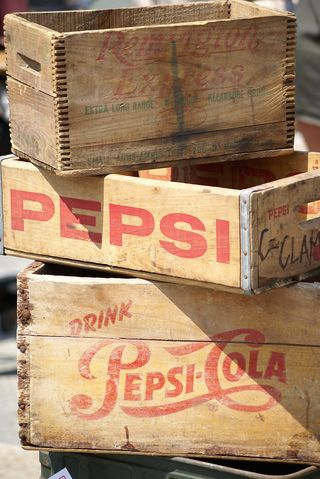Memory
Ads: Oregon Trail + Crystal Pepsi = Trip Down Memory Lane
A revived computer game meets a soft drink in a new ad space.
Posted June 30, 2016

If you are a 90's kid like me, you no doubt remember the computer game Oregon Trail. A small wagon with the player as passenger on a quest to the end of the line that included activities such as hunting, gathering and keeping your oxen team healthy.
Pepsi recently reactivated pre-40-year-old's nostalgia synapses by announcing a game reinvention with the relaunch of their clear, fizzy soda drink, Crystal Pepsi. Looking at "the good old times" has long been a fascination in our culture (Niemeyer, 2014). Remembering a discontinued soft drink is now one of them!
According to Yahoo! Music News "The interactive game features nostalgic a ’92 station wagon as the traditional mode of transportation, a throwback mall, random items like a bucket hat or pager along the road (or trail) and more. Unfortunately, the game won’t be available to play online until July 7th." Until then, Crystalpepsi.net has a video preview.
Regardless of type, ads attempt “to tie the product or service to our deepest and most basic psychological needs.” Therefore, when we purchase the product, not only will it give us something useful or pleasant, but it claims to make us better people or in this case, feel better by remembering the past (Kilbourne, 2012). Perhaps, we are having an in-group moment with our 90's kid comrades. The bottom line is that it attempts to influence one’s reality to motivate you to purchase a product (Harris & Sanborn, 2013). Bravo, Pepsi for taking our memories and making them into money! Nostalgia and the coupling of American pastimes have been a long exercised practice in advertising - particularly with soda (Greenfield, 2016).
Now that we as "90's kids" actually "have kids," there are some things to keep in mind when talking to young kids about the messages given during these screen time sessions. When processing advertisements with children, caregivers must keep in mind the attention advertisers give to a product and question why it is so. Since a product/service is at the forefront, parents can talk to their children about how the advertisers create their messages about products. Parents and kids also think about the ways advertisers create product recognition and their intended techniques at retention of said product. Product recognition is a basic premise in television – how someone to able to “learn” about a product ergo indentify it and remember it. Ads are formulated in a way to provide messages to get you to buy a product. Not only does a child have to retain this information, but they have to convince their caregivers to purchase it. Advertisers do this by creating simple messages that permits comprehension that intent. And in this case, Pepsi is playing on your childhood feelings and taking advantage of your adulthood purchasing power.
Related to cognitive skills, product research on people's attention span, and memories created during focus group sessions have played a role in the production of effective advertising. The combinations of visual, audio, text and emotional information are calculated in a way to promote the likelihood of a viewer purchasing a product (Kilbourne, 2012).
So, will you hit the proverbial road trip trail... and buy a Crystal Pepsi?
Just for old time sake?
References:
Greenfield, S. (2016). Giving the Global High Sign: Coca-Cola Advertising of the “American Way” in Life Magazine, 1941-1947.
Harris, R. J., & Sanborn, F. W. (2013). A cognitive psychology of mass communication. Routledge.
Kilbourne, J. (2012). Can't buy my love: How advertising changes the way we think and feel. Simon and Schuster.
Niemeyer, K. (2014). Introduction: Media and Nostalgia. In Media and Nostalgia (pp. 1-23). Palgrave Macmillan UK.


